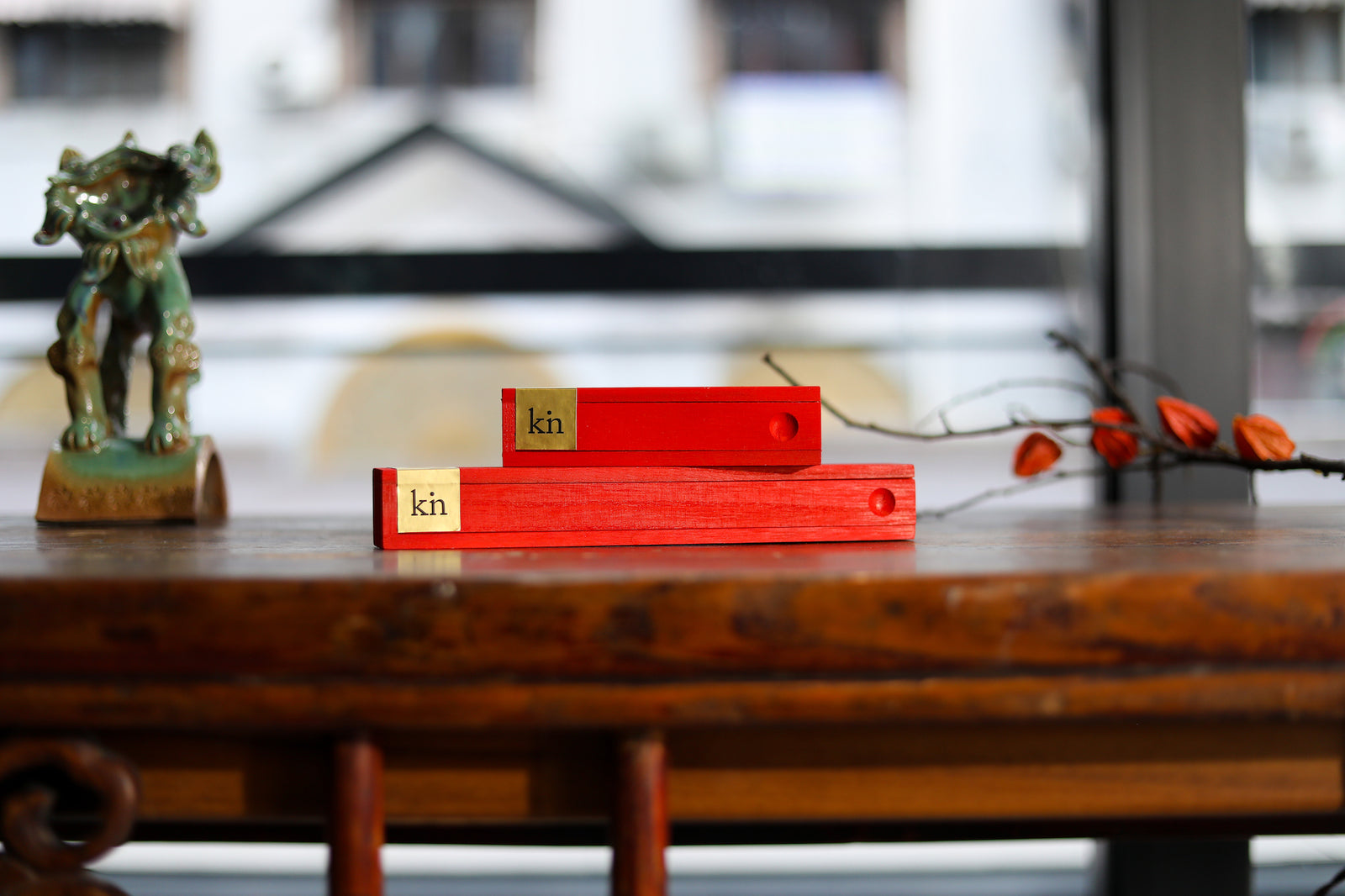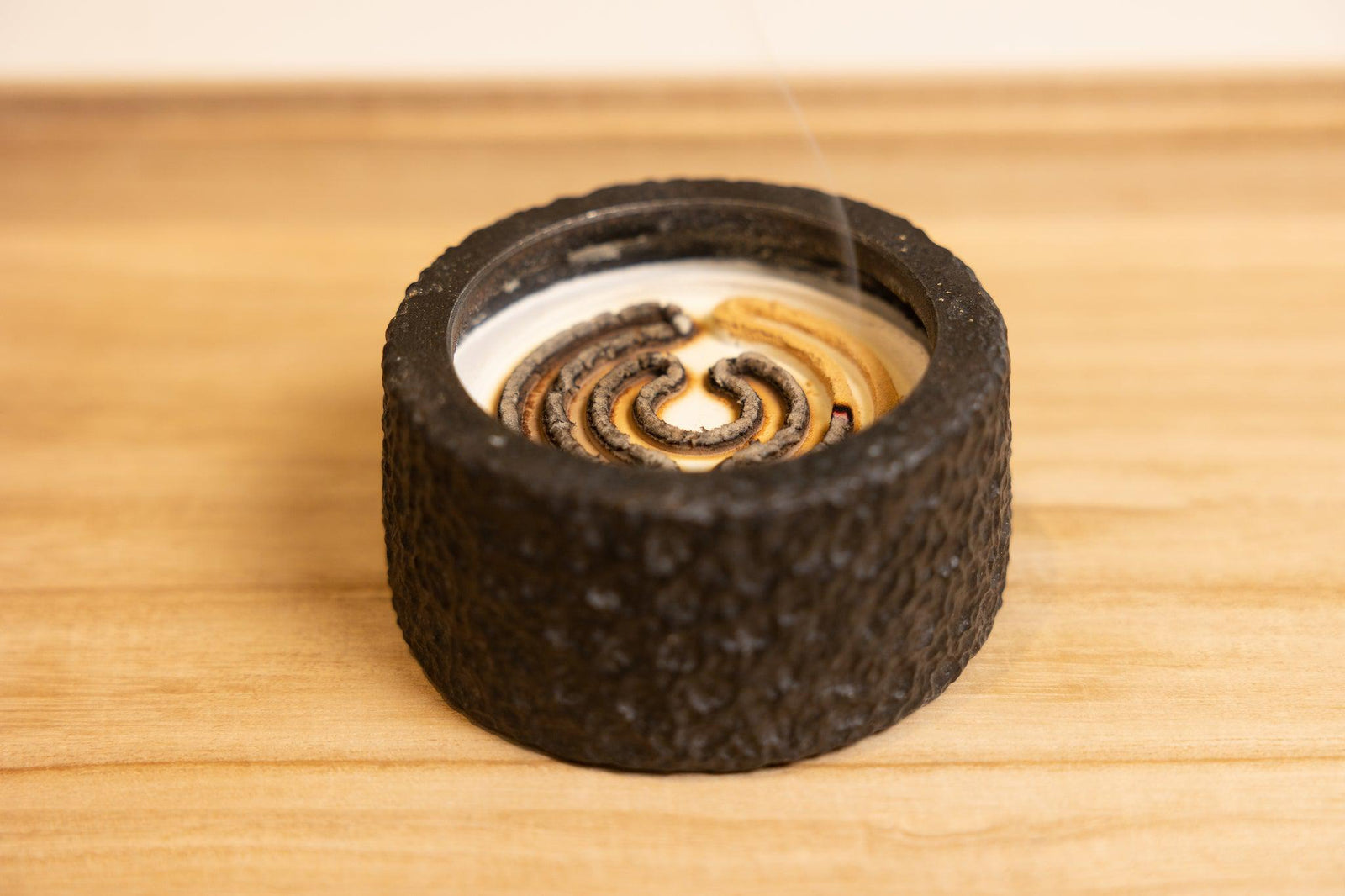Listening to the Ancient Zither: a Pictorial Rendition (crop of full image, Song Dynasty, The Palace Museum Beijing) – this famous image showcases an idyllic afternoon among mandarins in the Song dynasty, with two men enjoying an ancient zither tune, accompanied by burning incense. This was considered a highly desirable way of passing time.
“… In the medieval world of the Far East there was little clear-cut distinction among drugs, spices, perfumes, and incense – that is, among substances which nourish the body and those which nourish the spirit, those which attract a lover and those which attract a divinity”
- Edward H. Schaefer, The Golden Peaches of Samarkand, A Study of T’ang Exotics
This quote perfectly captures the use of incense in ancient and medieval China. The first recorded use of incense in human history was in ancient China, and for significant periods of Chinese history, incense was a treasured as an integral part of a person’s spiritual and physical life. It was drug, spice, perfume, and connector to otherworldly forces all in one.
The Character for "Incense" in Chinese
The easiest way to understand just how pervasive incense was in historical China is to first look at the Chinese word for incense.
Incense
香
(same in simplified and traditional Chinese)
Incense In Mandarin: Pinyin: xiāng ; Wade-giles: hsiang
(For those who don’t want to deal with technicalities: a rough guide of how to read this is “sh-ee-UN”, as though there is an additional “ee” sound in the middle of the word “shun”, emphasise on “UN”)
Incense In Cantonese: Hoeng(tone 1)
Historical Records for the Chinese Character for Incense
The character for incense or aromatics was recorded as far back as the Shang Dynasty (~1600 – 1050 BCE). Below is the original Oracle bone inscription, and the earliest recorded Chinese writing for the character. Chinese is pictographic, so they are literally derived from original drawings of the thing being depicted. Do you see the container at the bottom, with the burning plants on top? And the very graphic pieces of ashes falling? Even after having evolved for thousands of years, the character today (香) keeps this structure of having something resembling an incense burner at the bottom, and burning incense with ashes on top.

Incense as Drug, Spice, Perfume, and Spiritual Aid in Ancient China
A simple search on Google for the definition of 香 (xiang) brings up the following definitions:
As a noun: incense, perfume, spice
As an adjective: fragrant, scented, comforted, welcomed (common uses: “xiang” food, “xiang” sleep, certain items selling very “xiang”)
It’s immediately obvious from these definitions that “xiang” has a far broader set of meanings compare to the English word “incense”. In fact, the definitions of xiang reflect almost all of its historical uses and connotations as mentioned in the quote at the beginning.
Oracle bone inscriptions mention the multiple uses of aromatics: fragrant wood burning as part of worshipping and ceremonial practices; and sweet smelling herbs used to create some of the earliest forms of alcoholic drinks.
Chinese Incense Development Before the Middle Ages, in the Zhou, Qin, Han and Pre-Tang warring dynasties
By the Zhou dynasty (周朝, approx. 1050-250 BCE), a fairly elaborate ceremony for the worshipping of the skies had evolved, and the burning of scented herbs and woods was a central part of the ceremony.
The Qin and the subsequent Han dynasty (汉朝,206BCE – 220) saw the establishment of the silk road, and along with it imports of many foreign ingredients such as frankincense. Incense use grew significantly in variety and sophistication.
The first known Chinese book written about aromatics was Blended Incense Recipes《和香方》, by a well known historian and politician Fan Ye (范晔) in the Northern & Southern Dynasty, some time around year 430 CE. The book is now permanently lost, but citations of its content in latter texts show that it prescribed many medicinal aromatic blends for illnesses.
For more details of Chinese incense development in this period, please refer to the first part of our four-part Chinese Incense History series.
Incense Use in the Middle Ages - the Glorious Tang and Song Dynasties
By the Tang Dynasty (唐朝, approx. 600-900 CE), incense had become somewhat of a “luxury good”, and was deeply entrenched in palace and upper-class life. The Emperor gifted precious aromatics to other rulers, favoured concubines, and loyal servants.
Vain members of the Tang gentry – men and women – went beyond simple incense burning to bathing in perfumed water, carrying fragrant pouches, and consuming aromatics, with the aspiration of achieving naturally perfumed bodies. They also used aromatics lavishly in their homes, commissioning furniture made from fragrant woods, and covering their walls with perfumed mixtures. The epitome of taste was displayed through flower-viewing or flower-smelling gatherings, where hosts invited guests to view their gardens from aromatic galleries, or combined certain aromas with natural flowers to enhance the overall smell.
Incense use, trade and research reached a peak in the Song Dynasty (宋朝, approx. 900-1200 CE), along with Chinese literary, artistic and cultural development. Its incorporation into daily life spread from the upper-class into middle class populations. A proliferation of aromatic-related books fuelled its popularity and guided its use.
The use of incense in worshipping Gods and ancestors remained central in Tang and Song societies. By then, Buddhism and the associated use of incense in temples had also become pervasive. These practices remain today, and have unfortunately become one of the few widespread uses of incense in modern Chinese societies.
For more details of Chinese incense development in the Tang and Song periods, please refer to the second and third part of our four-part Chinese Incense History Series: the Tang Dynasty, Song and Yuan Dynasties.
Incense Use from the Renaissance to the end of Imperial Rule - Ming and Qing Dynasties
The prevalence of incense at the end of the Middle Ages not only continued but increased through the subsequent two dynasties, the Ming (明朝 1368-1644) and the Qing (清朝 pronounced “Ching” dynasty, 1636-1912).
In fact, many believe Hong Kong derives its name from the intense incense trades of this period. Hong Kong was as an important port for agarwood, and the name “Incense Port” is pronounced as “Heung Gong” in Cantonese (the local dialect of the region), thus the English phonetic translation to "Hong Kong".
Ming dynasty also saw the penning of the archetypal Chinese incense book, Xiang Sheng《香乘》- roughly translating into Record of Incense – which until this day is still considered the “bible” for Chinese incense creators. It was written at the end of the Ming dynasty by the renowned scholar Zhou Jiazhou (周嘉胄 1582-1661) who spent over 20 years researching and compiling the book. It is a comprehensive guide of everything related to incense, including details of many incense ingredients, their properties, uses, and traditional incense recipes dating from the Song dynasty.
From the middle of the Ming through to the Qing, the techniques for making incense sticks gained maturity, and incense sticks gradually became the dominant form of burning incense.
But with the fall of Qing dynasty in 1912 came the end of the imperial rule. China plunged into years of war and turmoil, and the practice of incense – along with many traditional cultural practices – came to a rather abrupt halt as more pertinent issues like food and survival became crucial. For almost 100 years after the end of Qing, many of the lost Chinese arts lay dormant, and it has not been until recent years that incense has started to slowly come back into modern Chinese life.
For more details of Chinese incense development in this period, please refer to the last part of our four-part Chinese Incense History series.
We hope that this brief glimpse into the role of incense in Chinese history will inspire you to incorporate the ritual of incense into your daily life, just as it has inspired us.






Miranda
June 14, 2024
Hi there,
This is actually not the title of a book, just the title of this particular article, and we wrote this ourselves. If you are interested in finding out more about Chinese incense history, please explore our blog and follow some of the links in this article. Thank you for reading!
Miranda